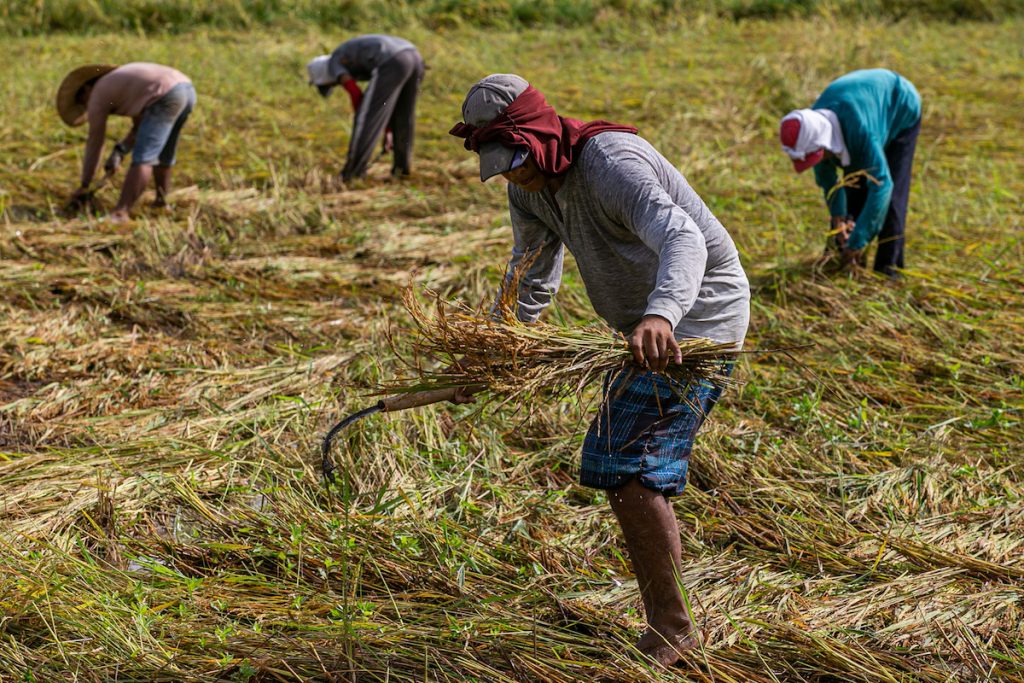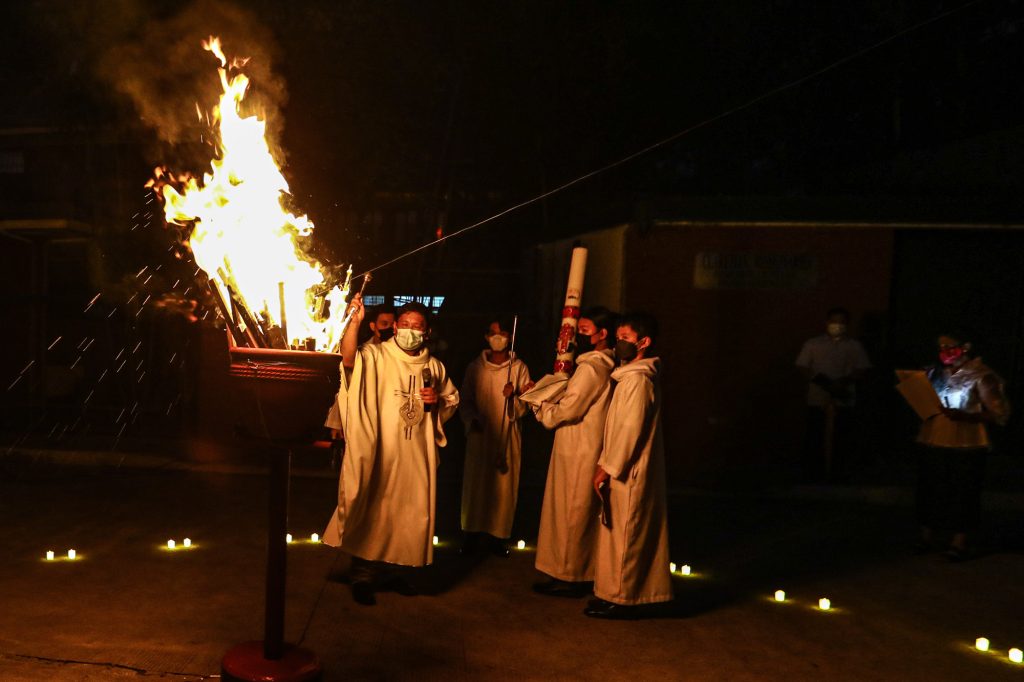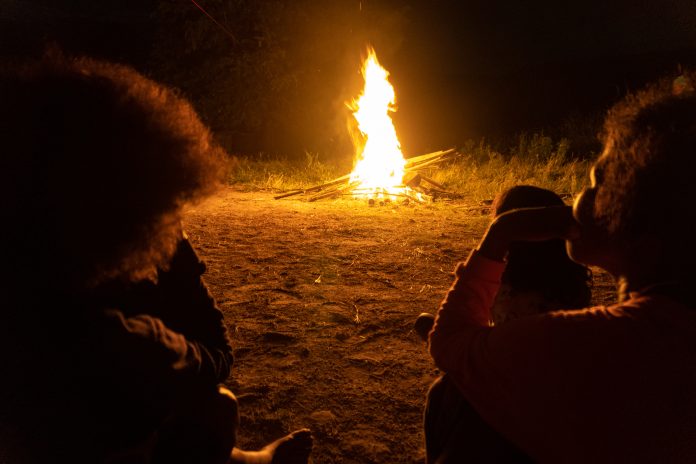I have always been fascinated by fire since this verse made an impact on me. “I came to bring fire on the earth, and how I wish it were already set ablaze!” (Luke 12:49).
I remember well, it was written on the cover of our program for a brief “desert” experience with my Carmelite community that was held in a house on top of a hill in Baguio City, ten years ago.
Reinforced by John of the Cross, “Before the divine fire is introduced into the substance of the soul and united with it through perfect and complete purgation and purity, its flame, which is the Holy Spirit, wounds the soul by destroying and consuming the imperfections of its bad habits.”
And as I grew in Carmel, fire became an “obsession.”
“Contemplation is nothing else but a secret, peaceful, and loving infusion of God, which, if admitted, will set the soul on fire with the Spirit of love.” (John of the Cross)
Fire plays a very important role today in coping with our problems brought by Typhoon Karding. Karding (international name: Noru) has wrought damage to lives and property and its after-effects are still felt and will be suffered for some time by families whose places were in the path of the typhoon.
Our farm is one such place. Located in a small village in San Miguel, Bulacan, 85 kilometers away from Metro Manila, situated at the beginning slopes of a mountain range. The rains, floods, and the winds have completely destroyed the modest vegetable gardens where we get our food.
The lagoon and small farm reservoirs overflowed and the tilapia I assume have escaped. The rows of blue ternate were uprooted and now are covered with wild vines. The dragon fruit plants were so badly beaten that it would probably take two or more years before they recover. Banana plants battered into a pulp may not recover. Bamboo groves were not spared. Cracked bamboo would not sell come January to May. Branches of mango trees and trees in the forest area were and still lay in tangles in many parts of the farm.
Notwithstanding all these, divine providence sustains the four families living in our farm. Providence is tangible. With food on the table, being able to send our students to face to face daily classes 11 kilometers away, and keeping our bills updated, we are much better off than most neighbors. And most important is the disposition that “all is grace” of all who live inside the farm.

Fire provided the answer.
One stop gap measure for now is to produce charcoal from the branches. While earning and at the same time cleaning up the farm of the broken branches left by Karding, the occasion became an opportunity to learn about charcoal making, the primitive way.
We still use the “mound method.” This is done by encasing a large pile of wood, methodically arranged to form a cone pointing upwards, in a mixture of mud, sand and fine charcoal discarded from previous projects. An exit hole is made at the top of the mound, then six air entries are made around the base of the mound. This creates a natural draft to keep the wood burning. Then the mound is lit from the top exit and the fire burns backwards in the heap, in the opposite direction of the draft. Carbon dioxide not oxygen rushes past and this prevents combustion which prevents the coal made above from burning completely into ashes. The air entries are sealed only when fire is visible. When all the exits are sealed the vent at the top is sealed.
While the wood is slowly burning into charcoal, the mound has to be watched closely to make sure that no holes would be created by the gradual burning of the wood underneath and the inevitable sliding of any part of the encasing as the wood underneath shifts. A small hole even the size where a pencil can fit in would draw air to enter the mound and the oxygen would cause a blaze that would leave ashes not charcoal. This would spell disaster. To make sure this would not happen and put to waste all their effort, the workers keep vigil the whole night just to make sure accidents are prevented.
Fire, good and bad, needs some kind of control. The control of fire according to archeologists and historians is one of the most important discoveries of man.
Charcoal is a fuel that burns hotter than the wood it is made from. Actually, we prefer to use charcoal in the farm, especially now that the price of liquid petroleum gas for cooking has really skyrocketed. When the dish calls for slow and long cooking, charcoal is the answer.
Since charcoal-making needs as many hands as possible, the whole family of the farmers joined in. The bigger children are able to help but the children who are too young to help occupy themselves by playing, imitating their fathers. Using the small twigs, they try to make their own small mounds.

Once, as I watched amused by the antics of the kids, the attempts of the children to light the wood ended up in a small blaze to the delight of the kids but to the consternation of their parents.
One father scolded them and warned them that if they didn’t stop they would end up becoming arsonists. The elder brothers followed the teasing by calling them “arsonistas.” Not knowing what “arsonista” meant, the two kids kept chanting the word arsonista as they skipped and ran around the big mound like Indians performing a ritual.
Arson became another trigger summoning thoughts and silence. From the Latin word “ardere,” meaning to burn, arson is the act of setting something on fire for an evil purpose.
But it is not only property that burns and there is a different kind of arson as well as a different type of arsonist. The kind that burns not property but the reputation of someone by spreading lies about another person is said to be a moral arsonist. The key element present is the malicious intent to destroy.
We have personally witnessed how persons can easily lie and twist circumstances just to destroy. And these moral arsonists, unscrupulous as they are, do not care if they destroy lives of even the innocent. There is that scientist whose career record is exemplary in terms of honesty, integrity and contributions to the country well known to the community of science and scientists in the country. Somehow, in a questionable transaction manipulated by dodgy officials, he is made a scapegoat. Isn’t this a typical kind of moral arson?
There is also that allusion made public in a social platform by an official of the government that a member of the judiciary is lawyering for a particular red-tagged group. Is this not a kind of moral arson?
And there are so many other public statements posted with the intent of destroying the reputation of persons, some of which have tragically ended with the targets being murdered. Aren’t those who spread the lies moral arsonists?
Beware, one can get burned in the process of burning others.
This kind of fire can be fought by another kind of fire, the fire which emanates from the Holy Spirit. But when we pray for fire to fall, we have to remember that “Fire doesn’t fall on empty altars. There has to be a sacrifice on the altar for the fire to fall. If you want the fire of God, you must become the fuel of God.” (Tommy Tenney)
Edita Burgos is a doctor of education and a member of the Secular Order of Discalced Carmelites.









